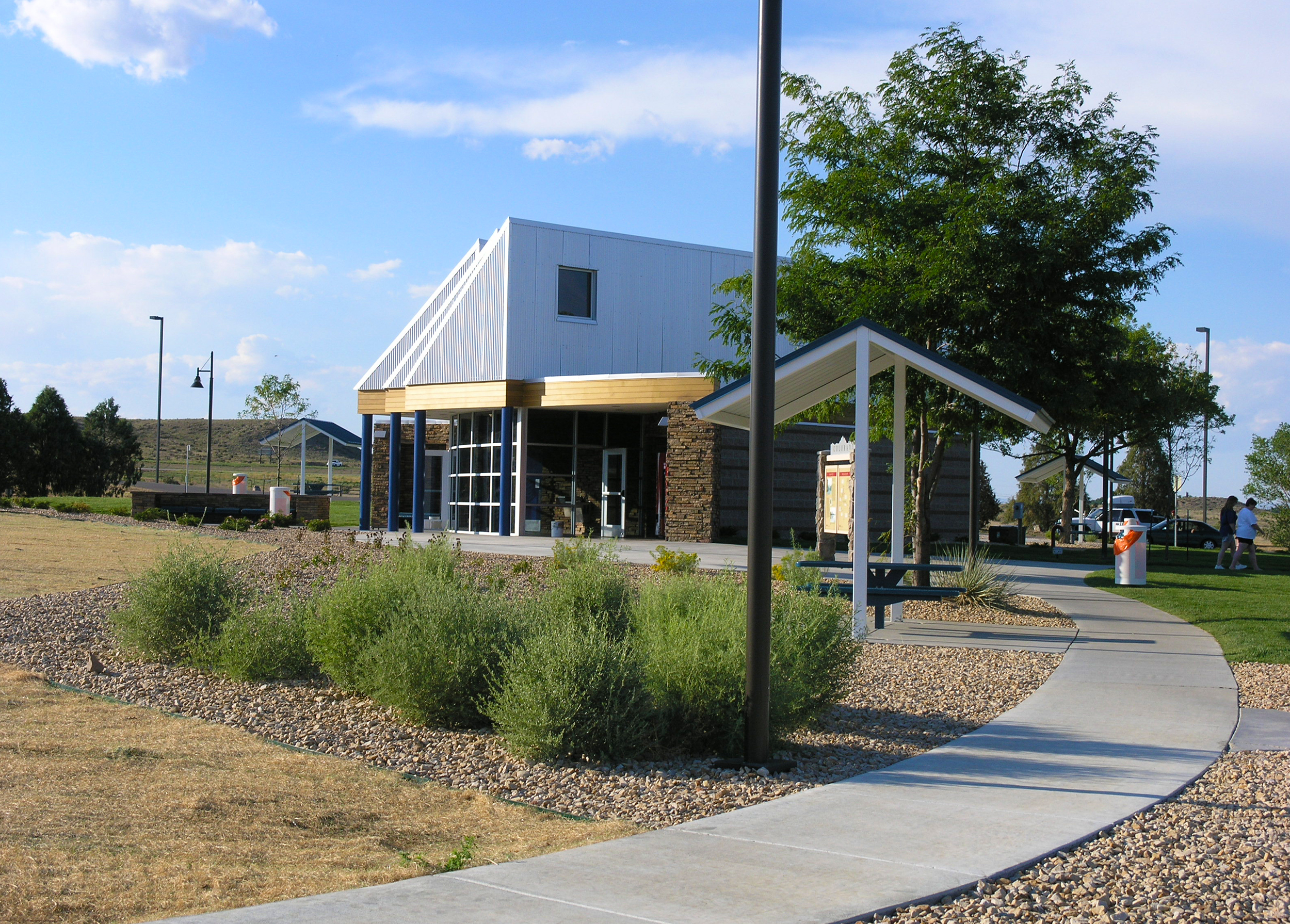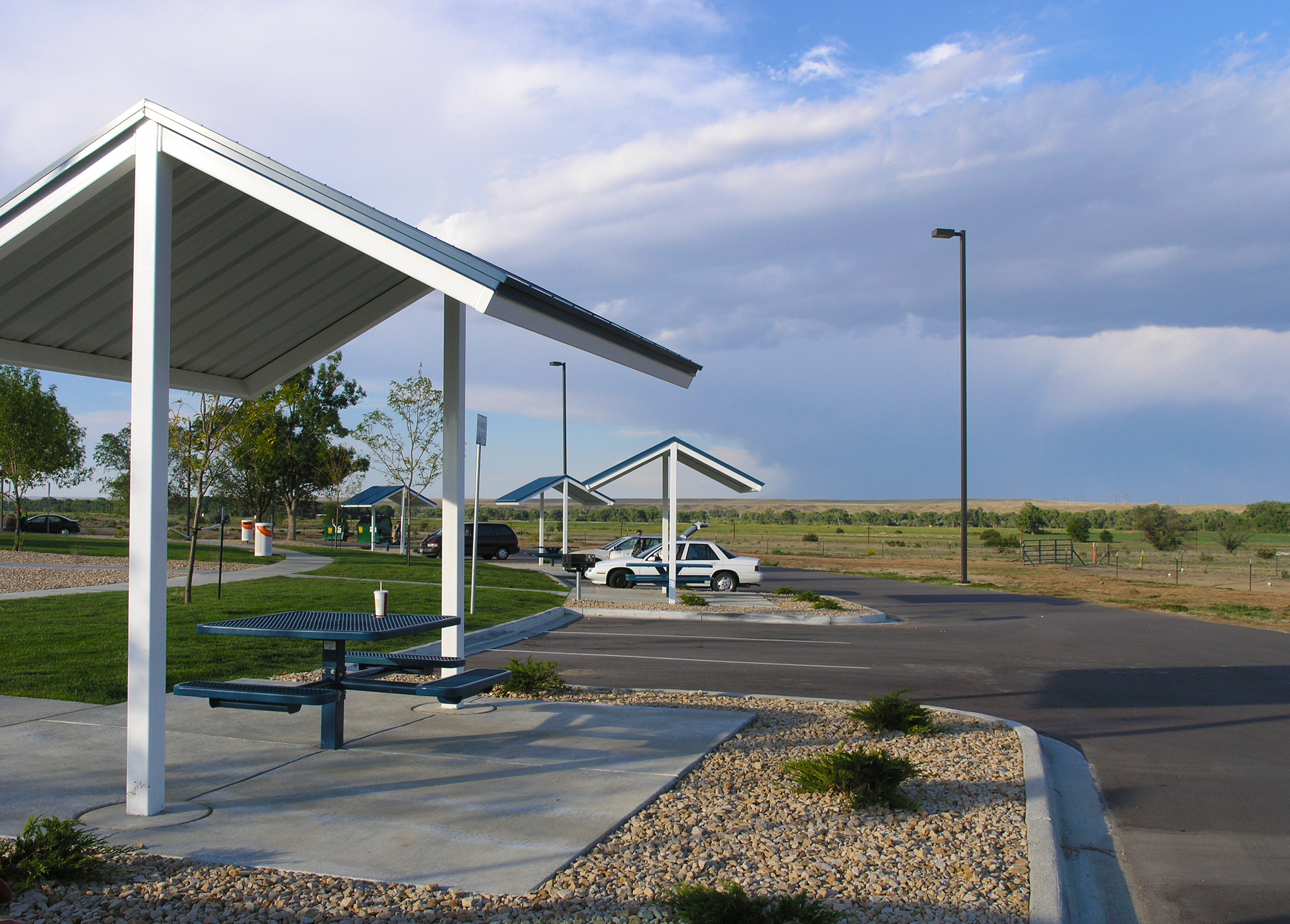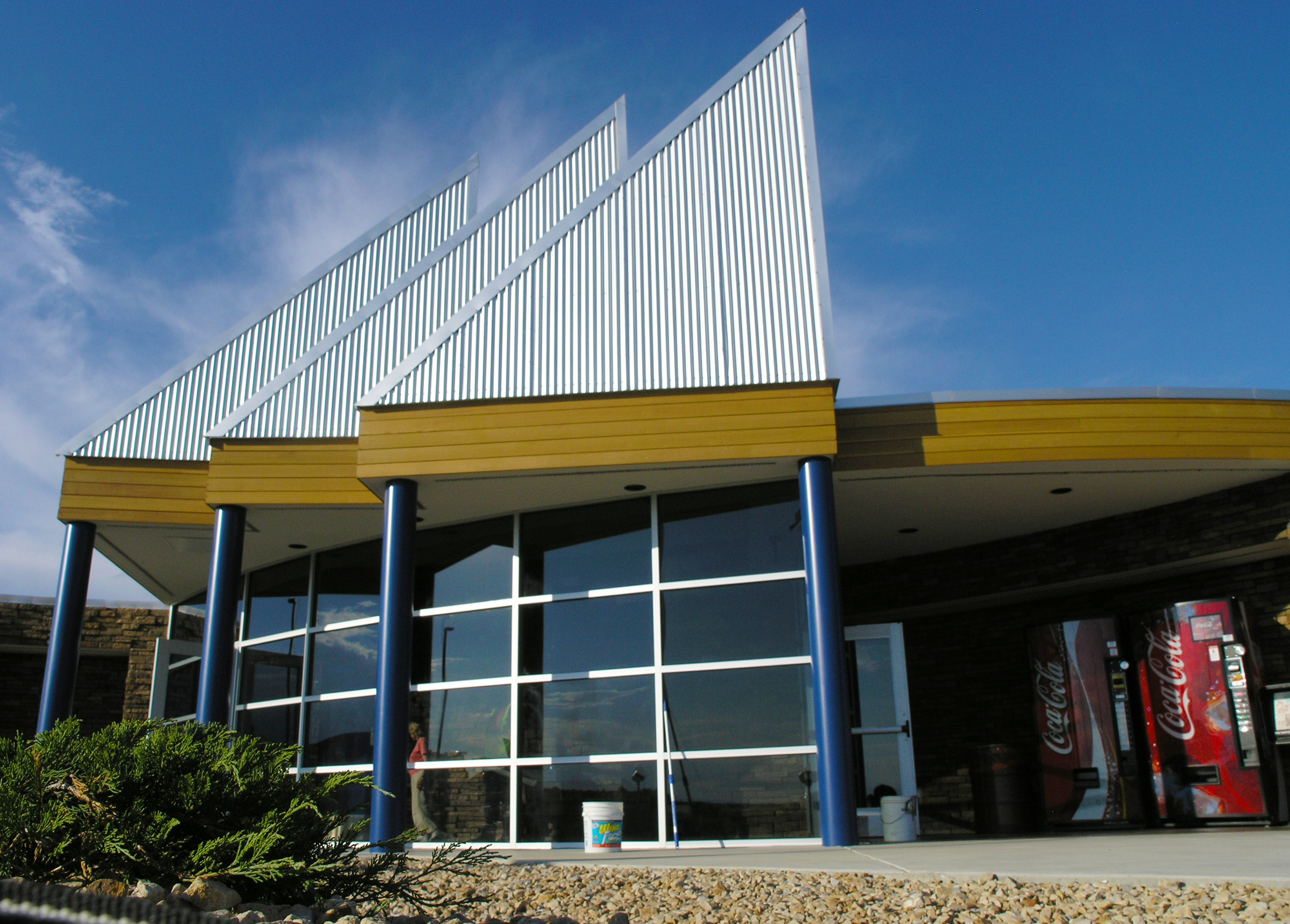Piñon Rest Area
The $4.5 million Piñon Rest Areas are located on the southbound and northbound sides of I-25 between Colorado Springs and Pueblo. While the Colorado Department of Transportation (CDOT) prepared site survey, interstate ramp design, parking lot traffic configuration, and interstate signing and striping, Wilson & Company prepared complete architectural design documents for the replacement of the rest area facilities as well as engineering support to CDOT for drainage design and site grading. Wilson & Company also provided water and wastewater, landscaping, and irrigation design.
Concrete block was used on both the interior and exterior of the facility, and stone accents were used in the entry with decorative concrete block used on the remainder of the building. Insulation and air space were sandwiched between blocks for durability and energy efficiency. Above the masonry and out of reach from visitors is a cedar wood band both inside and out that adds richness to the building. These bands also run around and across the restroom, adding scale to the rooms as well as bracing one of the high walls. Above the exterior cedar bands is a corrugated metal panel wall and roof system that is reminiscent of the mountains and also helps reflect daylight into the building. On the interior above the cedar band is a light-colored gypsum board wall and ceiling system to help reflect daylight entering the building.
Water and wastewater components included working directly with the State Department of Health as well as the Pueblo County Department of Health to obtain well-permitting approvals for upgrading the existing well system. The wastewater system involved abandoning the existing non-functioning septic fields in favor of newly designed evapotranspiration fields at each facility.
The Wilson & Company team coordinated across agencies to complete the project and overcome obstacles related to schedule, cost, and quality. The work was completed within a tight deadline for the design and construction teams to avoid the complete closure of the facility during the tourist season. Wilson & Company also implemented innovative architectural elements to meet the constrained construction budget. The mechanical room was designed for two levels. Plumbing is on the floor level that provides good access to fixtures, and HVAC is on an open grate above to minimize ductwork and not interfere with plumbing. This cost-saving design strategy also saved square footage in the building and enabled better access to all equipment. The men’s and mechanical rooms are trapezoidal, allowing areas with more width to have it while reducing square footage in areas that did not need the width. Quality improvements were made by using durable materials throughout and masonry on the lower portions where it is in contact with visitors. Orientation and open storefront glazing allow clear line-of-sight and increase security. Conceptual, schematic, and final designs required coordination with the various government agencies, including the health department, to work out all the permits and approvals for the new and existing wells, leach fields, and evapotranspiration system.



